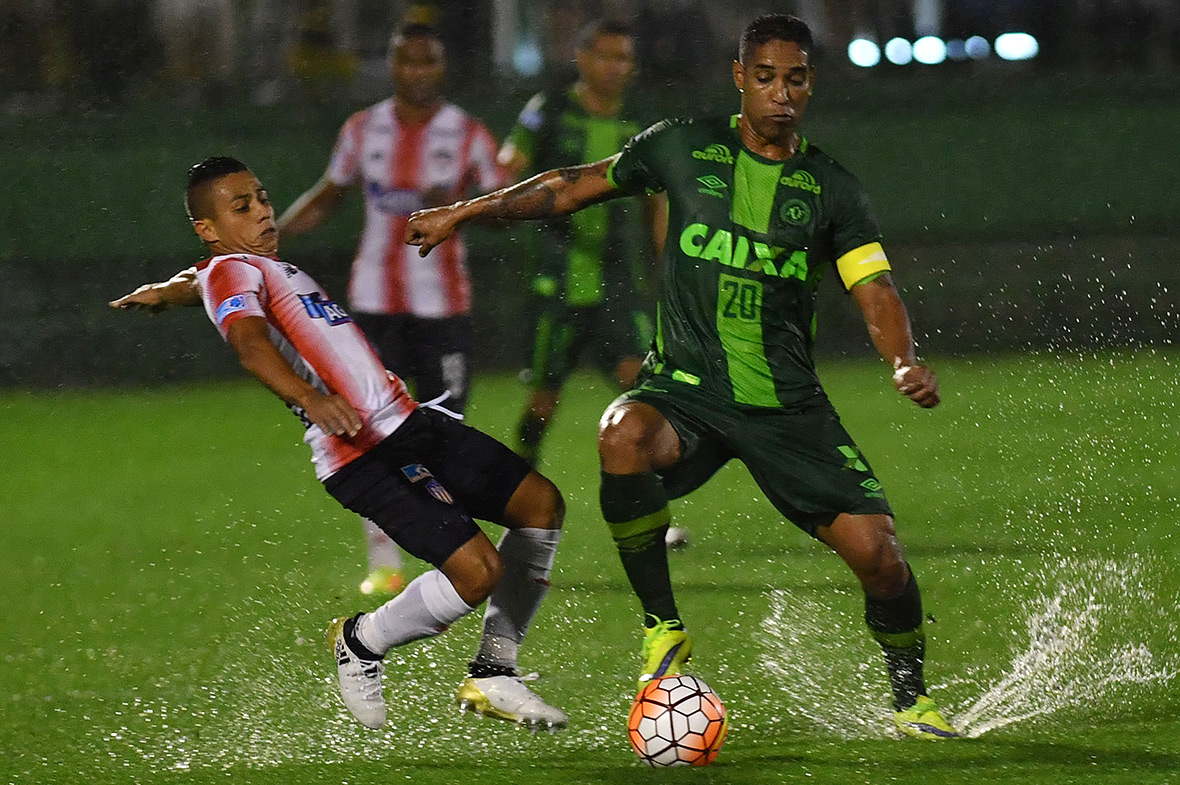Brazilian fans and football world mourn death of Chapecoense players
The scale of the loss was staggering in Chapeco, a city where it takes a tenth of the population to fill the small stadium's 20,000 seats.
Thousands of grieving fans in green and white squeezed into Chapeco's cathedral and even more packed the town's stadium to mourn the death of 71 people in a plane crash, 19 of them members of Chapecoense Real, the local football team that had been on the brink of greatness.

The club had been having the best season in its 43-year history, heading to the first of two matches in the final of the Copa Sudamericana, the continent's equivalent of the Uefa Europa League tournament. Less than a week ago, the streets of this small farming city rang with cheers and firecrackers as the team reached the final, capping a fairy-tale rise from Brazil's fourth division in 2009.


The excitement turned to tragedy late on Monday (28 November) when the team's chartered flight crashed near Medellin en route to the final against Colombia's Atletico Nacional, the biggest game in Chapecoense's history. Only six of the 77 passengers and crew survived, three of them players.
The tragedy echoed throughout the footballing world, but the scale of the loss was staggering in a city where it takes a tenth of the population to fill the small stadium's 20,000 seats.









Most of the team's players were among the 71 people killed in the crash, as well as local journalists and team officials.
Few of the players had an international profile, and none had any appearances with Brazil's national team. Most had played all over Brazil and Latin America. Only a few had ever reached Europe, like Cleber Santana, who played for Atletico Madrid in 2007-10. Chape strikers Bruno Rangel and Kempes, both 34, were among the top scorers in the Brazilian league, with 10 and nine goals, respectively. Goalkeeper Danilo was rescued alive from the plane wreckage, but died while being treated at a hospital.




Coach Caio Junior is credited with Chape's quick rise, joining the club this year after guiding teams in the Middle East. Born Luiz Carlos Saroli, he coached numerous Brazilian teams, including Palmeiras, Flamengo and Botafogo.

Three Chapecoense players were among the six people who survived the crash. Dalla Costa said defender Helio Neto was undergoing cranial surgery and reserve goalkeeper Jackson Follmann had a leg amputated. Defender Alan Ruschel was reported in intensive care but in stable condition.

Brazilian President Michel Temer declared three days of official mourning. Fellow top division Brazilian sides also showed solidarity, offering loan players to Chapecoense and urging the national federation to give it a three-year stay against relegation while the club got back on its feet. Brazilian football champions Palmeiras have asked for permission to wear Chapecoense's jersey in their last match of the season.
The team Chape were flying to Colombia to play – Atletico Nacional – said it was asking the South American football confederation to give the Copa Sudamericana title to Chape as a tribute to the players who died.
Around the world, the sport paused to remember the victims. Barcelona and Real Madrid held a minute of silence before their practice sessions during the day, and France's top two leagues observed a minute's silence at Tuesday night's games. A minute's silence was also observed before the EFL Cup quarter-final matches between Liverpool and Leeds United and between Hull City and Newcastle United.



Visit the International Business Times UK Pictures page to see our latest picture galleries.
© Copyright IBTimes 2025. All rights reserved.






















